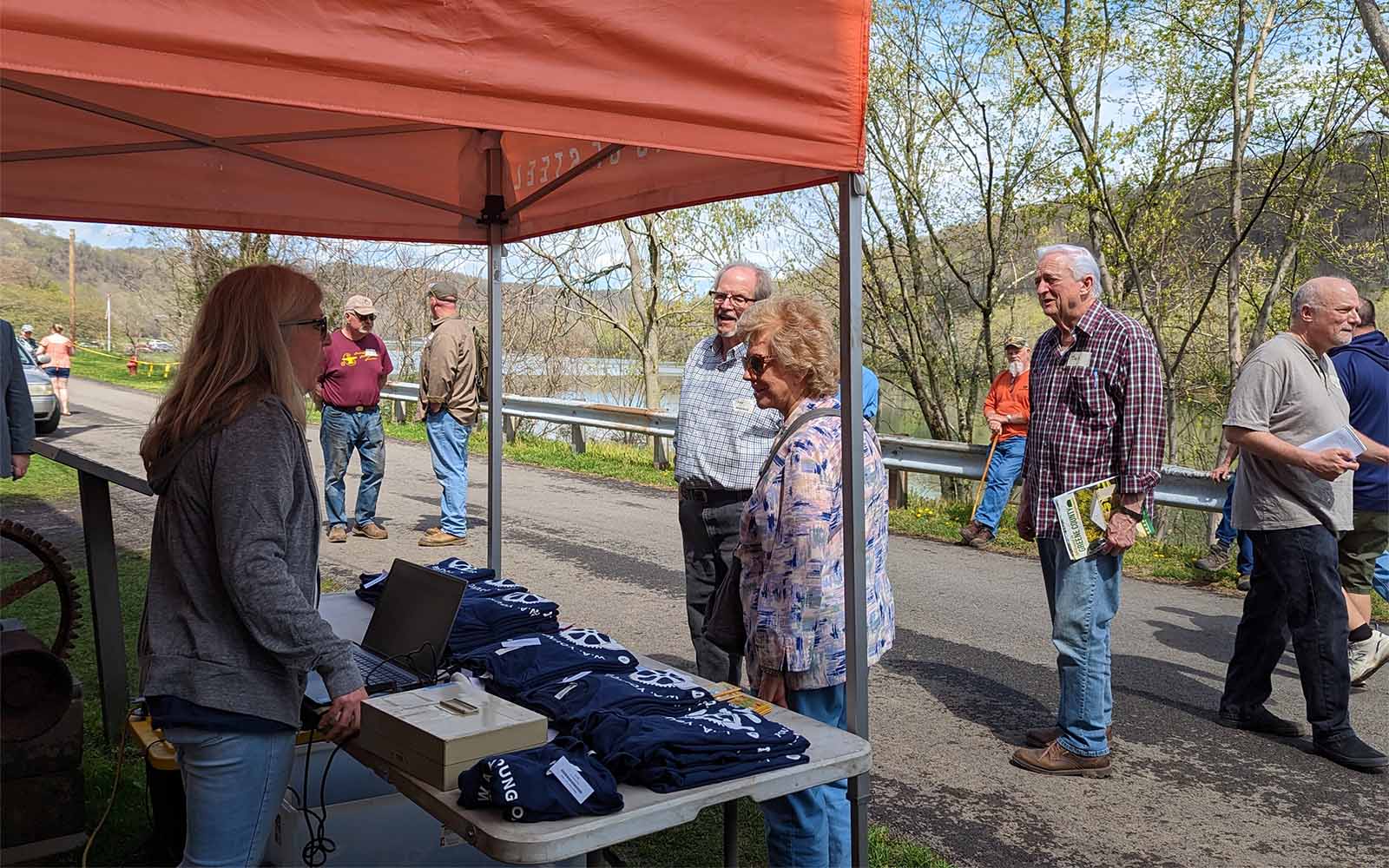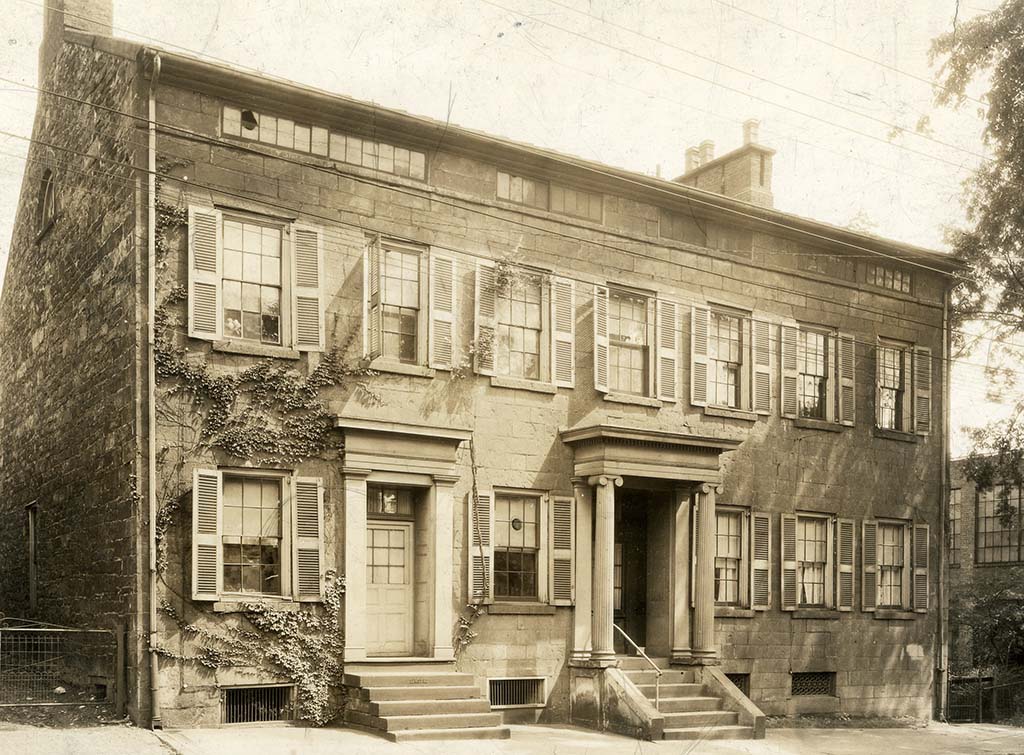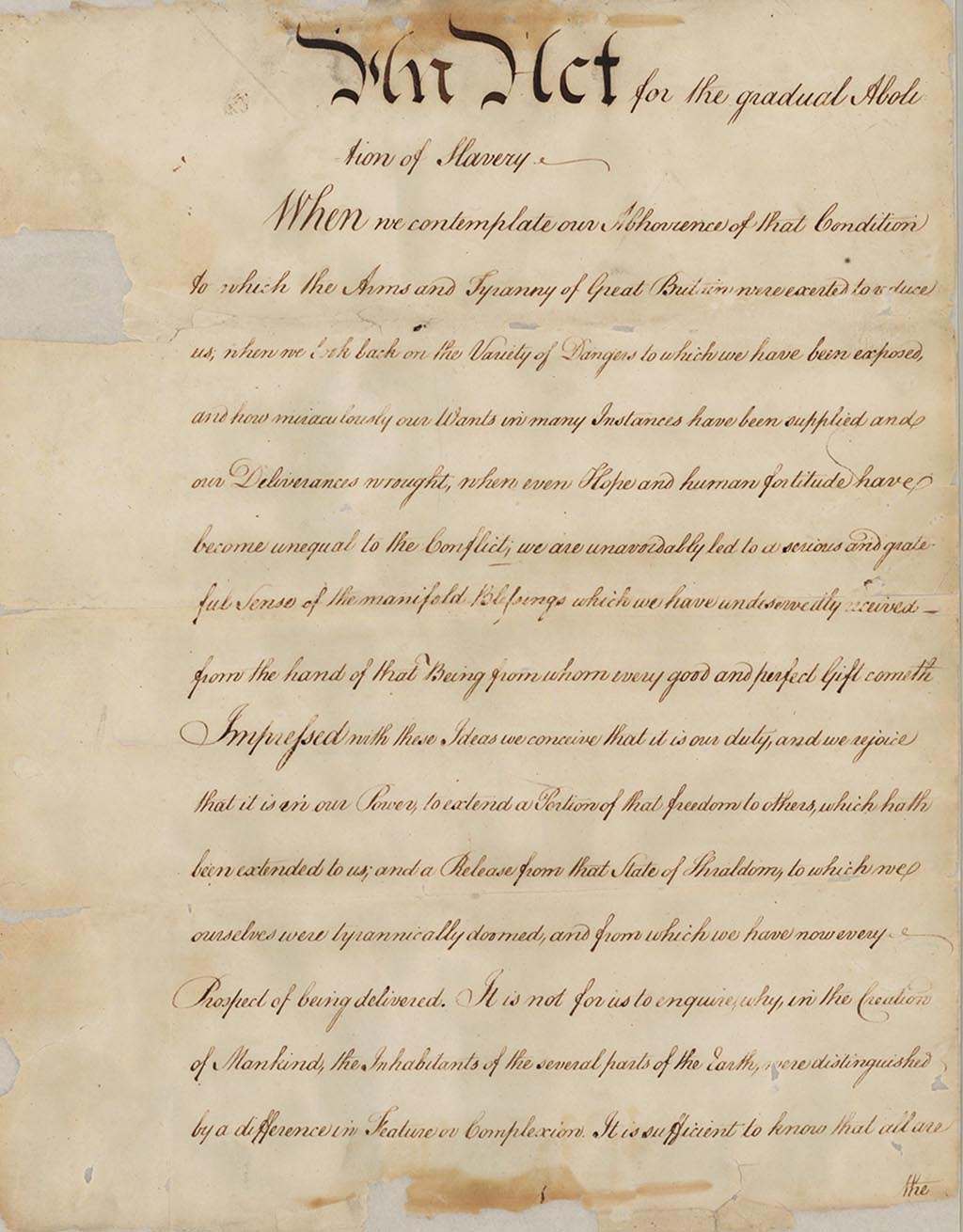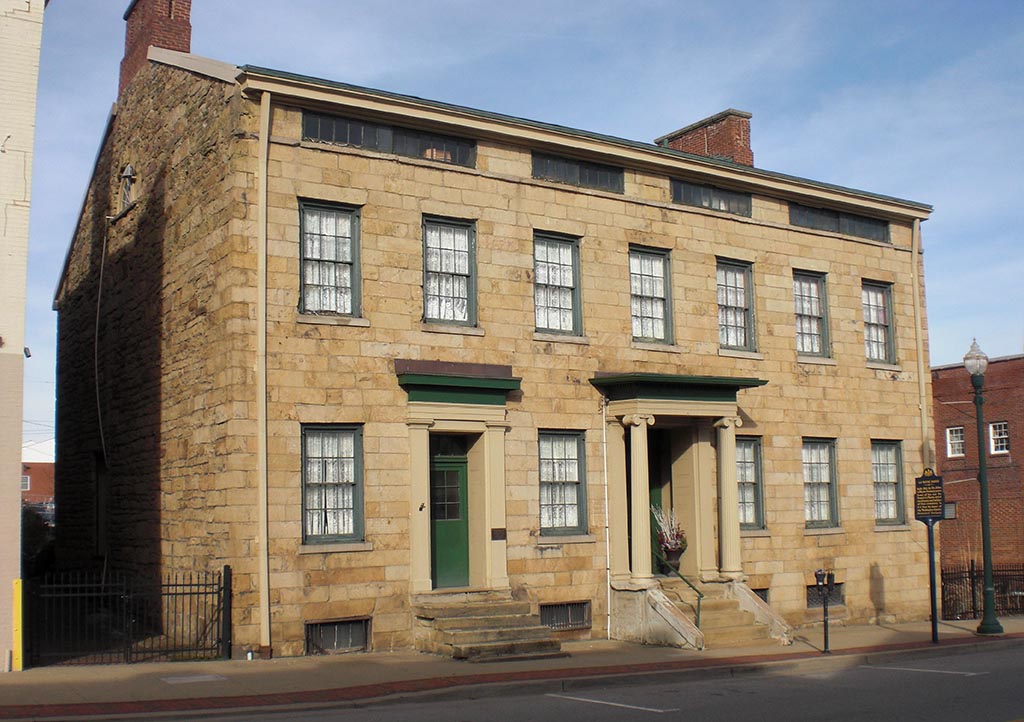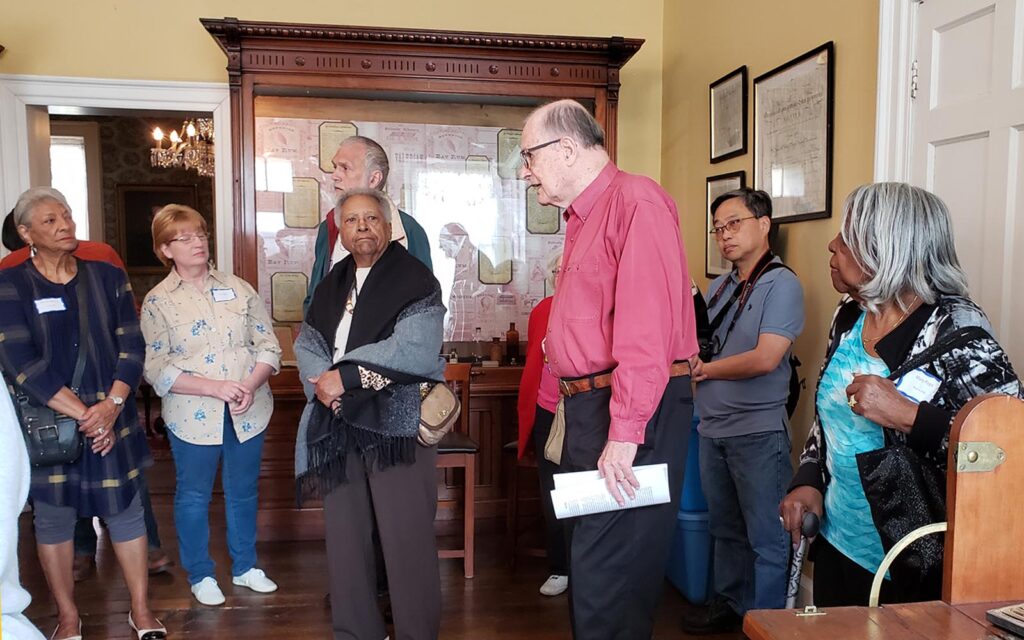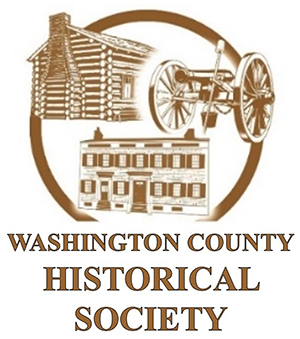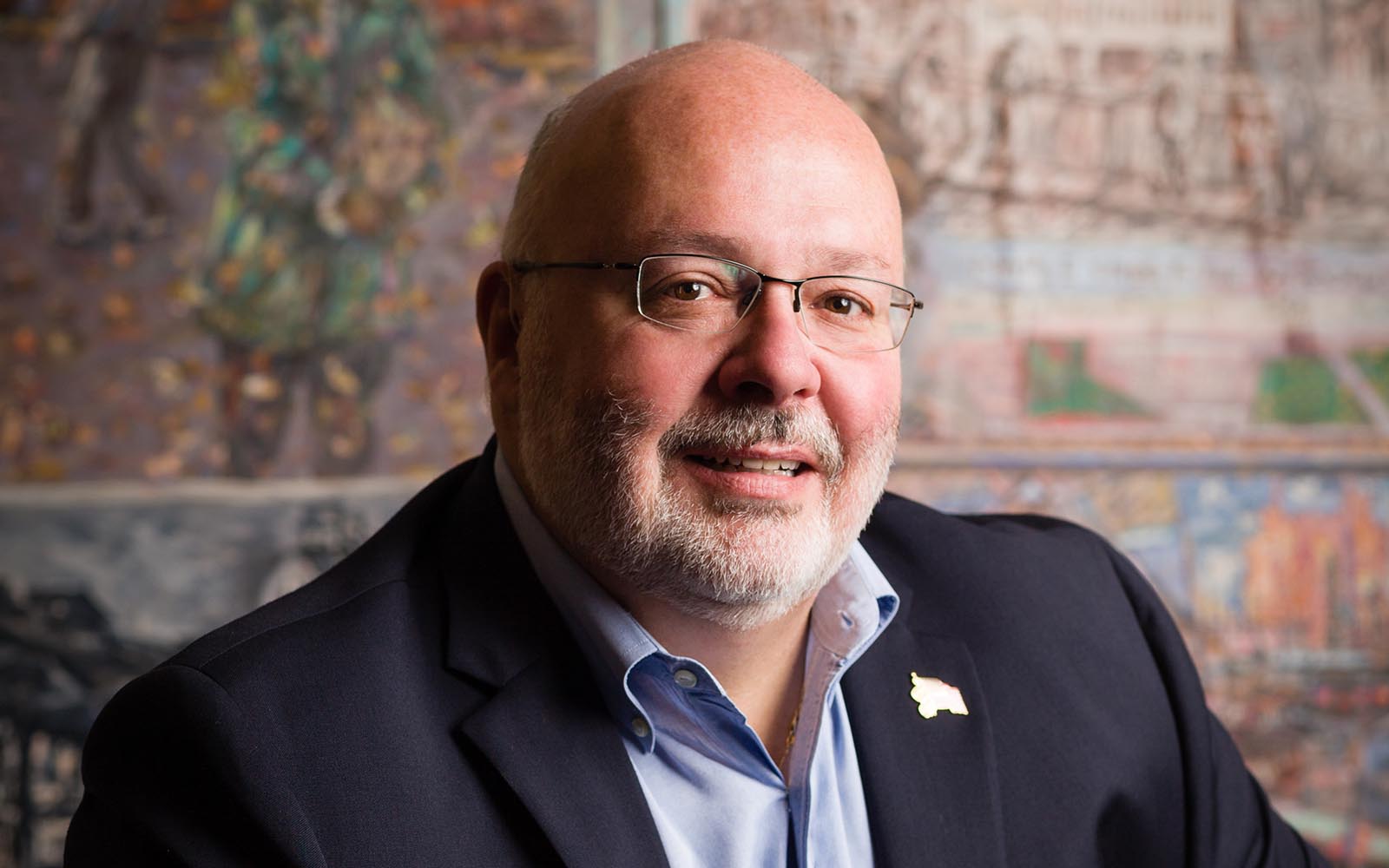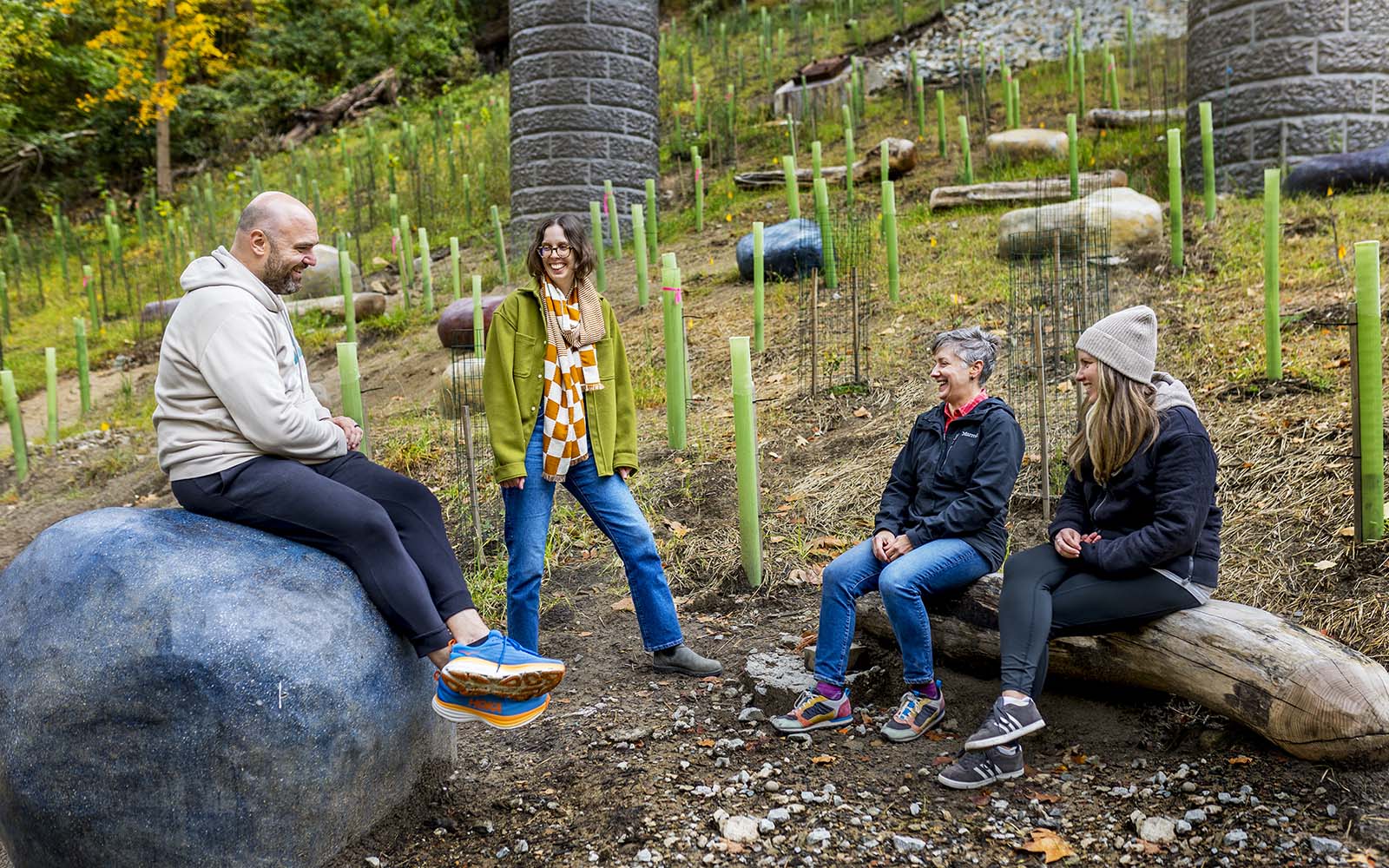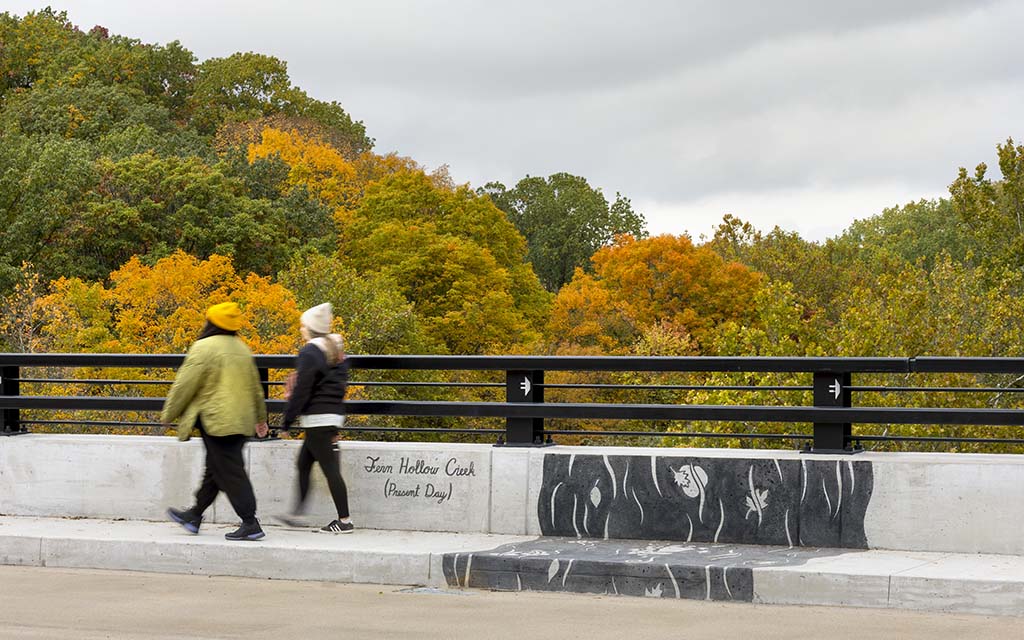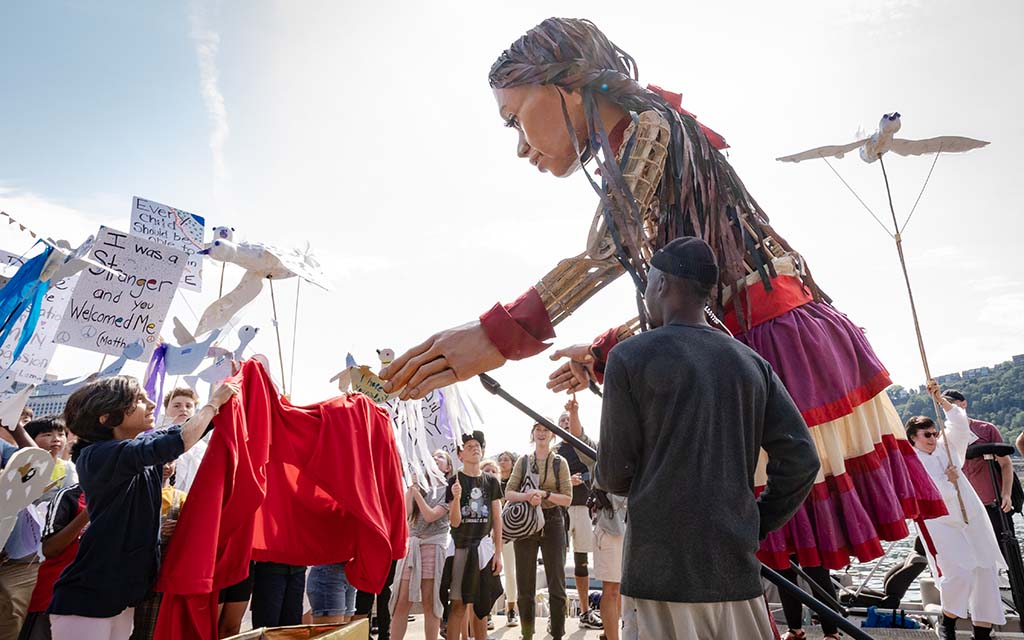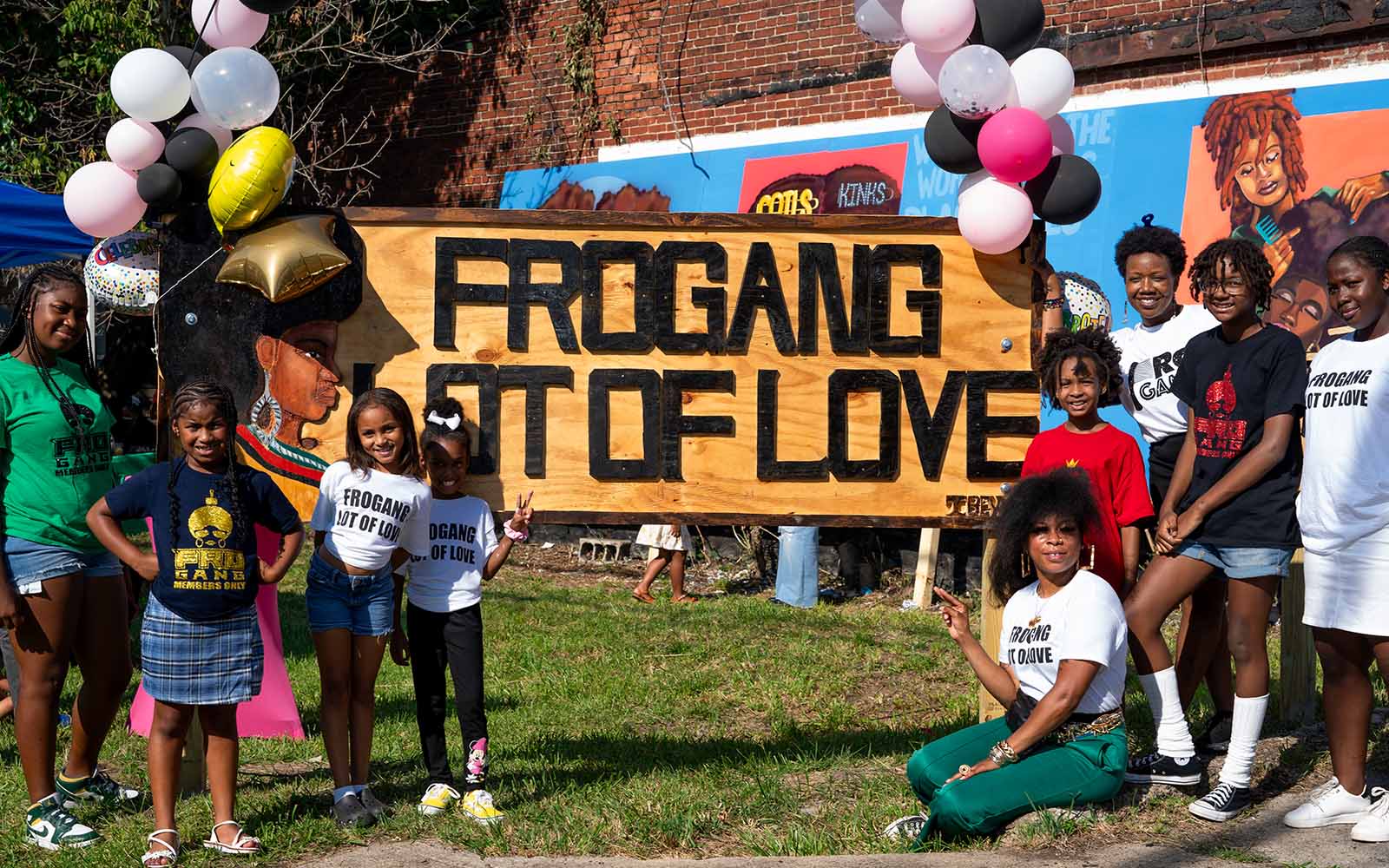
The FroGang celebrates their Lot of Love in Beltzhoover. Photo by Ishara Henry.
Getting to Know: Shiftworks
Getting to Know is a new column that offers an opportunity to become better acquainted with some of Rivers of Steel’s partners throughout the eight-county Rivers of Steel National Heritage Area via a series of articles featuring one of our community allies. In this article, writer Jason Vrabel examines how Shiftworks Community + Public Arts serves its mission through civically engaged public art crafted in collaboration with an array of communities, both geographic- and affinity-based, and how this work elicits stronger connections among those stakeholders.
By Jason Vrabel, on behalf of Shiftworks
Public Art + Community: Building Resilience Through Collaboration—Four Stories from the Pittsburgh Region
Let’s Eat
Dozens of community members sitting under a canopy tent discussed the handmade, colorfully painted ceramic plates on the tables—no two were the same. From a distance, the plates looked like family heirlooms. One plate was an illustrated sweet potato with instructions for how to grow one, and circling the edge of it was an anonymous quotation about the pandemic’s impact on the cost of food.
A team of servers dressed in black and white fanned out to serve the first of a three-course meal. As the guests began eating, the servers commenced the second part of their dual role—as performers.
Whether they knew it or not, everyone was participating in Let’s Eat: Abundance, Access and Community, a public art project designed to address food insecurity. This project was led by multimedia artist Lindsey Peck Scherloum and her team, which included The Brashear Association, Inc., a nonprofit organization serving South Pittsburgh neighborhoods, as a community partner.
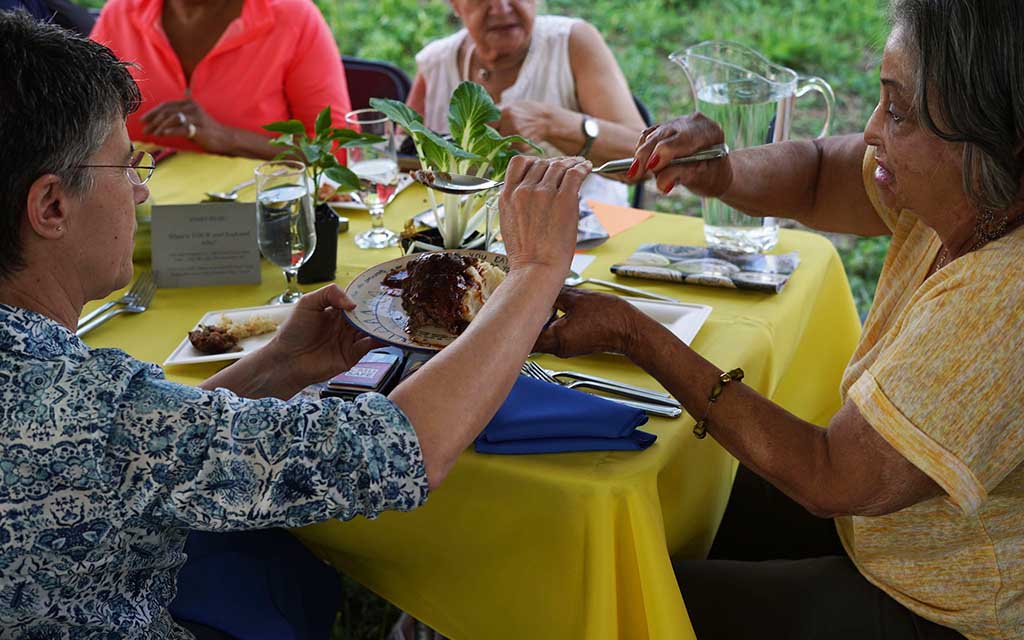
The Let’s Eat event. Photo by Ishara Henry.
Let’s Eat was one of four collaborative projects undertaken as part of the Public Art and Communities program (PAC), a program of Shiftworks Community + Public Arts (formerly known as Office for Public Art), in collaboration with Neighborhood Allies and the Borough of Millvale. Overseeing the program was Divya Rao Heffley, Shiftworks’ associate director, and Tamara Emswiler, senior program manager for social impact design at Neighborhood Allies. Between 2021 and 2024, PAC engaged approximately 1,000 people in creating temporary works of public art that addressed a community-defined need, such as persistent racism or social isolation, that was worsened by the COVID-19 pandemic.
Under the tent, Donathan Arnold, one of the servers-turned-performers, announced, “Here are some of the words people shared when we asked them to tell us about food.”
“I’m proud when food tastes good, when I cook and people compliment me, when I’m cooking with my family. I live in Allentown,” responded another server / performer, embodying a resident who had responded to a request for statements about their relationships with food. Many similar statements followed.
A year prior, during the project’s community engagement phase, the Let’s Eat team had identified food insecurity as their theme—an issue of great importance to The Brashear Association, which operates a food pantry year-round—with the goal of reducing stigma by “celebrating food” in a communal way.
“But what about that is art?” Scherloum asked at the time. “It’s a cool idea and could not be art, but we’re going to make it art.”
And they did. Let’s Eat combined ceramics, performance, and community-inspired dishes to create an event series that was entertaining, educational, and empowering. The Brashear Association’s community engagement, combined with Neighborhood Allies’ project management, enabled the team to find consensus around conflicts that arose. It was a supporting cast, however, that included dramaturge Nick Grosso and his actors, event planner Tara Ferderber, and chef Carlos Thomas of Feed the Hood that made Scherloum’s vision a reality.
Public Art and Communities: A Program of Shiftworks, Neighborhood Allies, and the Borough of Millvale
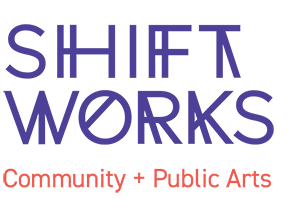 The PAC projects might have taken different paths toward completion, but they all followed a process designed by PAC’s Program Team and Advisory Group. Through a Call for Artists, each of the four selected community partners—The Brashear Association, Steel Smiling, Etna Community Organization / Sharpsburg Neighborhood Organization, and the FroGang Foundation, Inc.—chose their artists. Primary and secondary project managers (mostly staff from Shiftworks and Neighborhood Allies) with expertise in community-based public art were assigned to support each team.
The PAC projects might have taken different paths toward completion, but they all followed a process designed by PAC’s Program Team and Advisory Group. Through a Call for Artists, each of the four selected community partners—The Brashear Association, Steel Smiling, Etna Community Organization / Sharpsburg Neighborhood Organization, and the FroGang Foundation, Inc.—chose their artists. Primary and secondary project managers (mostly staff from Shiftworks and Neighborhood Allies) with expertise in community-based public art were assigned to support each team.Everyone convened at Placemaking Academy, a six-week training program led by Shiftworks that introduced the newly formed teams to the work ahead. Community engagement best practices, discussions about the possibilities of what public art could be, and establishing a common urban design language were some of the topics covered. Artists then embarked on an engagement process in the communities where they would work for the next two years.
The Let’s Eat passage above and those that follow are excerpts from a report titled, “Public Art + Community: Building Resilience Through Collaboration.” Through storytelling, the report captures the personalities, struggles, and triumphs of creating public art in the Pittsburgh region.*
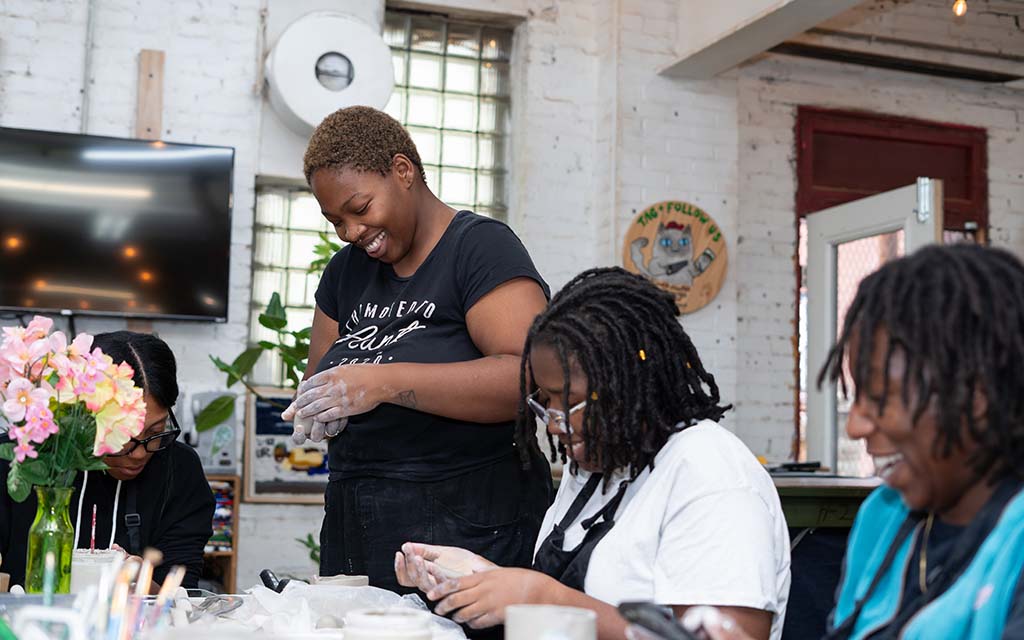
The Black Queer Affinity Series. Photo by Ishara Henry.
Black Queer Affinity Series
A walled garden on a former nineteenth-century estate in Pittsburgh’s East End was recently claimed by artist Noa Mims for anyone who was Black and Queer and wanted to participate in an experiential public art project. In collaboration with Steel Smiling, a nonprofit organization committed to Black mental health, Mims created the Black Queer Affinity Series, a three-part project that incorporated group yoga sessions, social gatherings, and ceramics into a creative healing process centered on Black Queer mental health.
All public art needs space. Like murals and sculptures needing walls or plots of land, events need to happen somewhere. Mims had studio space for the ceramics workshops they wanted to incorporate, but where would they find—in Pittsburgh—an indoor space for a group of Black Queer people to come together and engage around shared mental health experiences?
Knowing that Black-run spaces accommodating of large groups were scarce in Pittsburgh, Mims said, “At a certain point in time, I stopped looking at it as a challenge and started looking at it as an initiative to carve out space within the city for us to exist, to gather, to find community. Curating that kind of experience came down to, ‘How can I make everyone comfortable with this thing that normally doesn’t get to happen?’”
Mims’ needing to create space where none existed highlights current cultural realities of the Pittsburgh region that no single project or organization can change outright. But cities are made up of communities, which can change and also effect change. The Black Queer Affinity Series impacted Steel Smiling and a segment of the city’s Black population in ways big and small, but it also raised questions about the nature of Pittsburgh communities—how they’re defined, how they’re created, and how they’re sustained.
“Sometimes community isn’t where we are; it’s who we’re with, what we’re doing, what we’re talking about, and how we show up for each other,” Courtney Abegunde, Steel Smiling’s operations director, said. “Many people don’t feel like a part of the community they live in.”
“Communities have been self-identifying for millennia,” Divya Rao Heffley, a project manager for the Black Queer Affinity Series said. “Communities can be place-based but can also transcend place. The Shiftworks approach is to ask communities, ‘How do you define yourself, and then how can we support that?’”
Along with their project team, Mims organized twenty-one events. Their goal of confronting social isolation through togetherness for Black Queer people was achieved and, in doing so, revealed the persistent struggles unique to Black residents of the Pittsburgh area.
“People were able to come together,” Mims said. “For folks who had been isolated for quite some time, it was really refreshing to say, ‘I’m not alone with these experiences that I’m facing.’ That was a huge success in and of itself: You’re not alone; you’re isolated. And that takes active engagement to counteract. That’s where the success lies—in breaking down that isolation.”
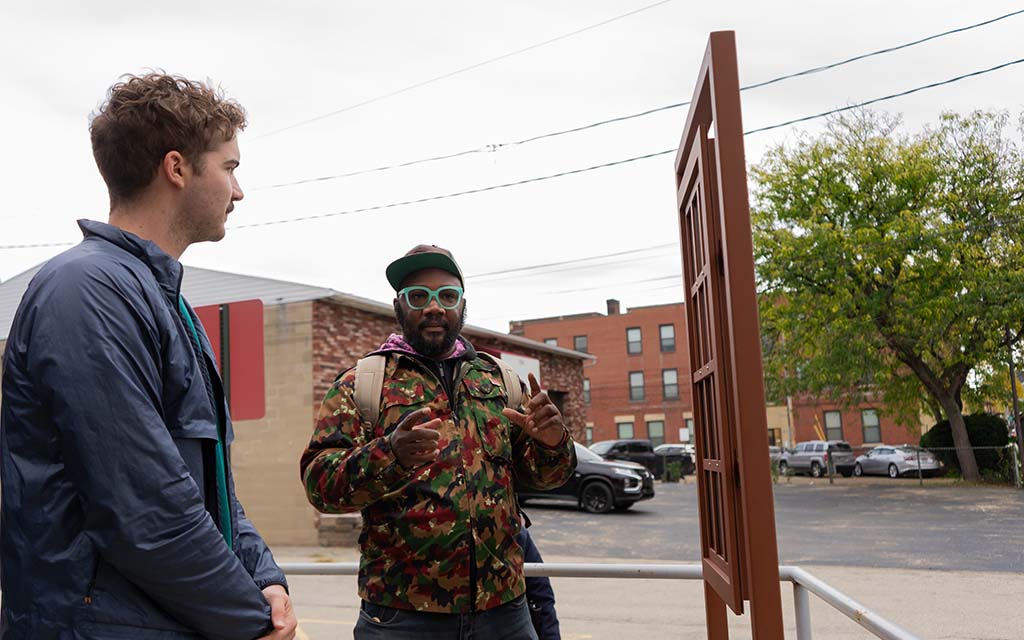
Artist Jason McKoy, right, discusses his We Are Windows installation, 2023. Photo by Ishara Henry.
We Are Windows
The similar mill town histories of Etna and Sharpsburg have led them on similarly innovative post-mill town journeys toward becoming sustainable communities. Sitting side by side along the Allegheny River, these two communities seem too alike to be separate boroughs.
Community leadership has enabled the kind of collaboration needed to further long-term community goals for both boroughs, including investing in public art. As the executive director of Etna Community Organization (ECO) and a member of Etna Borough Council, Megan Tuñón said she originally envisioned pursuing a “traditional” public art project through PAC.
“I came into it thinking we were going to do something like a mural, but it turned out to be so much more than that,” she said.
Sharpsburg’s mayor, Brittany Reno, who was executive director of the Sharpsburg Neighborhood Organization (SNO) at the time, said that artist Jason McKoy’s “tech-based, out-of-the-box” art was just what these communities needed. Being accepted as co-applicants into the PAC program, ECO and SNO collaborated on a public art project unlike any other in the region. We Are Windows, the project undertaken by McKoy, demonstrated how innovative public art can facilitate, or provoke, civic engagement in unexpected ways.
While all PAC teams needed to respond to the pandemic in some way, McKoy would have the added challenge of working in two municipalities simultaneously. Early on, he found the longstanding rivalry (a “beef,” he called it in jest) between Etna and Sharpsburg amusing, but he respected each community’s autonomy and identity. With personal interaction limited by the pandemic, McKoy used postcards to solicit input about the issues the communities wanted to address. The response showed two boroughs speaking with one voice.
“What was coming directly from the community was isolation, isolation, isolation,” McKoy said. Both places experiencing the same thing became the impetus to create “one work of art that would knit the communities together, instead of pursuing two separate projects.”
McKoy’s concept featured electronic “windows” that “looked” from one borough into the other. Placed in publicly accessible locations, digital screens (think vertical flat-screen TVs) displayed multiple video feeds from cameras placed in the corresponding community—kind of like a group Zoom call, featuring places more than faces.
An online forum held to discuss We Are Windows brought about mixed reactions. Privacy and possible “surveillance” were central to community concerns. As a project manager for We Are Windows, Derek Reese, Shiftworks’ program manager for artist services, said real community engagement allows for these kinds of issues to arise.
“We don’t steer away from controversy. We don’t try to sanitize situations,” he said.
Noting that “compromise is the only way to get things done,” Reno said candid neighborhood discussions led to a scaled-back version that satisfied the communities’ privacy concerns.
Reflecting on the community-based approach to creating art, Tuñón said We Are Windows was valuable to her as a community leader who wants to invest in more public art. “I appreciate how innovative [this project] is, and that it aligns with how we see ourselves as a community … We want to do innovative things moving forward.”
Reno added, “This process challenged us and definitely led to me feeling more cognizant of the fact that the entire process is art, the reaction is part of the art.”
McKoy, who has historically sought an element of disruption in his art, anticipated some resistance to We Are Windows. When asked if his project shifted public awareness about cameras in the public realm, he said, “I want to say yes, even if only an increment.”
About the project’s impact on public perception about art, he said, “In places where art isn’t in the forefront . . . part of my job is to change people’s minds, or at least make them think deeper and more critically about what art can even be. I believe—I hope—I accomplished that.”
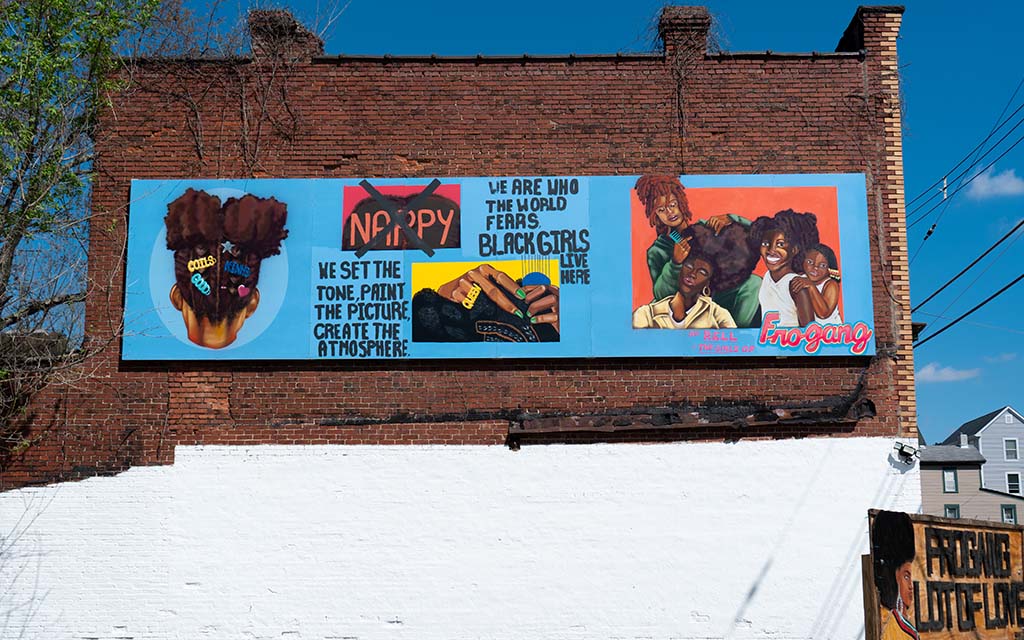
The FroGang Mural in the Lot of Love in Beltzhoover. Photo by Ishara Henry.
FroFully Connected
On a grassy parcel in Beltzhoover known as the FroGang Lot of Love, dozens of guests arrived for FroGang’s long-awaited mural dedication ceremony. Several event-day hiccups kept them waiting, but Kelli Shakur, FroGang’s founder and CEO, was unfazed.
“There were a lot of challenges that could have deterred the whole mood and atmosphere,” Shakur said afterward, “but instead, because of the love of FroGang and the love of what’s going on on that lot, people stayed. That’s what the Lot of Love is all about: bringing people together and turning things that should be bad into good.”
FroGang Foundation, Inc. is a nonprofit organization with a mission to promote positive self-image for Black girls by celebrating natural Black hair and culture. The Lot of Love is a modest-sized lot of outsized importance that FroGang had been seeking to adopt and enliven as an outdoor center for activities and events. Shakur’s organization had long-envisioned a mural that would commemorate the Lot of Love when it’s in use, and claim the space for FroGang when it’s not. Through PAC, artist Rell Rushin created Frofully Connected, a mural celebrating Black girls and women, painted on large panels designed to be installed on the brick facade of an adjacent building.
Rushin’s artwork, as big-hearted and unafraid as FroGang’s mission, was completed on time, but its installation was held up by onerous city regulations for more than eight months. Frofully Connected is a story of the unwavering determination of an artist who was new to public art and a community organization with a vision.
Rushin began attending FroGang’s recurring Successful Sister Sessions as an observer at first, later as a participant. While conceptualizing what the artwork would be, she was struck by one activity in particular: girls reciting affirmations—positive statements about themselves that they had written in journals—while looking into self-decorated, handheld mirrors. She was moved by seeing them “loving themselves and each other and causing no harm by judging or being cruel.”
The latter is learned behavior, Rushin said, and “seeing them unlearn that was really cool.”
Rushin’s bold color palette and her figurative illustrations of Black girls and women were influenced by the FroGrang girls, whom the artist acknowledged when signing the artwork. The 32’ x 8’ mural accomplished the initial goal of claiming the land for FroGang, but it’s the text accompanying the images that directly speaks the goals of confronting racism and replacing feelings of isolation with belonging:
WE ARE WHO THE WORLD FEARS, BLACK GIRLS LIVE HERE.
Rushin’s smooth journey (her first) through the city’s Public Art and Design Commission helped her grow as an artist, but even with the help of an architect, engineers, project managers, and a professional sign installer, countless delays throughout the permitting and zoning phases kept her mural grounded.
“If we were struggling—a whole team of people—to get this mural up, what would this process look like if I wasn’t working with Shiftworks? There would’ve been no chance of my artwork getting out there,” Rushin said.
Almost nine months later, the Frofully Connected mural is finally out there.
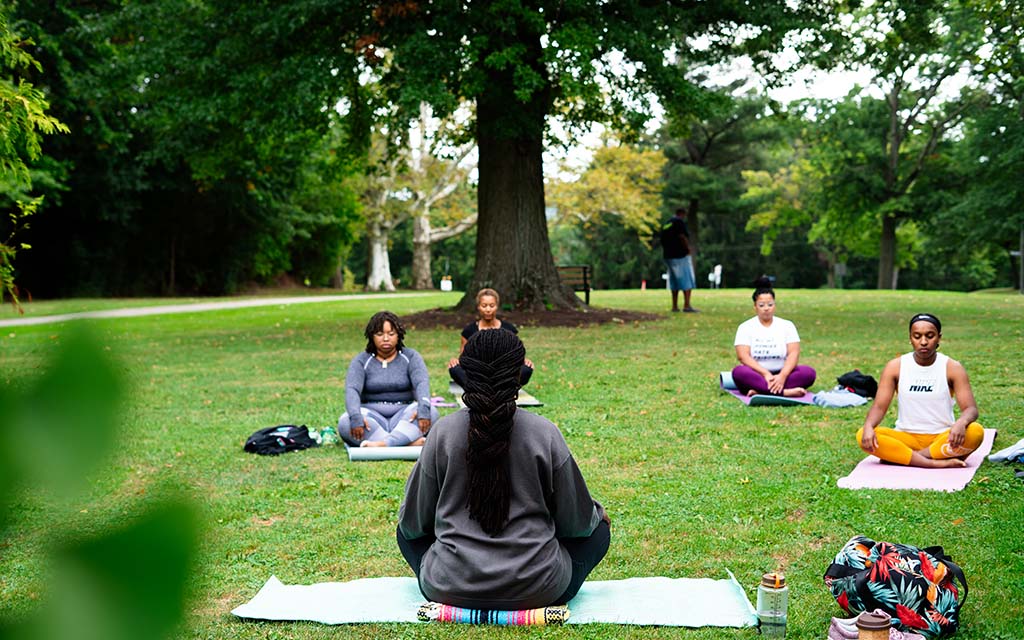
Artist Noa Mims Steel Smiling series seeks to bridge the gap between Black people and mental health support through education, advocacy and awareness. Photo by Ishara Henry, 2023.
Place Matters
There is a strong sense that public art, over time, belongs to more than whoever commissioned it, created it, or owns the deed for the land upon which the artwork resides. By intention or accident, public art invariably becomes part of the public realm in ways that can’t easily be measured. Created by many hands, public art belongs to many people.
If public art is to be an effective means of addressing inequality, it must confront the complex environments where it is placed. Launched during the greatest health crisis in a century, PAC shifted collective and individual perspectives by directly confronting root causes of persistent racism, stigmatization, and social isolation. PAC’s final artworks will be temporary, but the aesthetic experiences produced by them and the processes that created them will endure.
###
* The excerpts above have minor modifications to reflect the style guidelines and writing conventions of Rivers of Steel. No substantive changes have been made that reflect the content or intent of the original author.
About Shiftworks
Shiftworks Community + Public Arts envisions a region in which the creative practices of artists are fully engaged to collaboratively shape the public realm and catalyze community-led change. Shiftworks builds capacity for this work through civically engaged public art, artist resources, public programming, and technical assistance.
If you’d like to learn more about Shiftworks, read about their transformation in this article by Sallyann Kluz and Ashley Anderson, Art. Works.
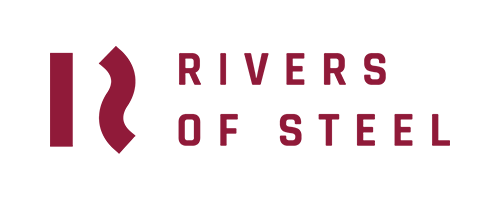
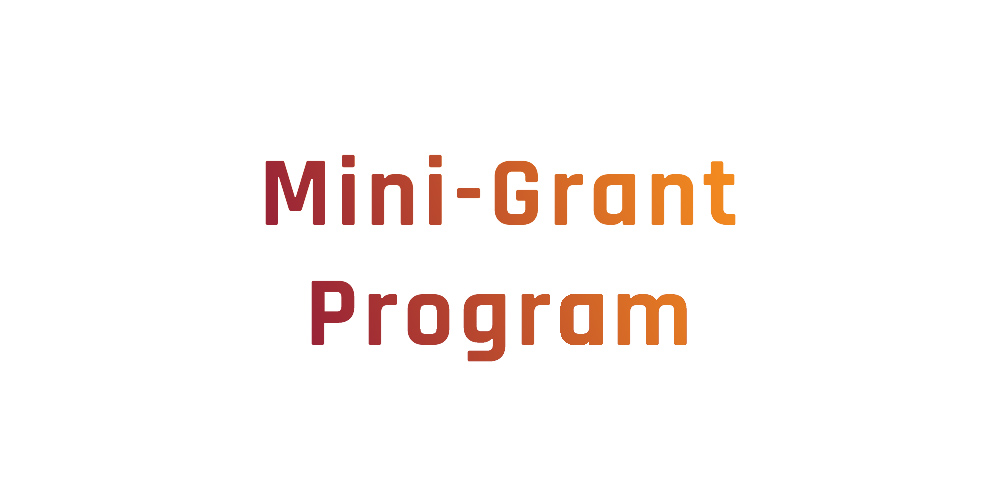
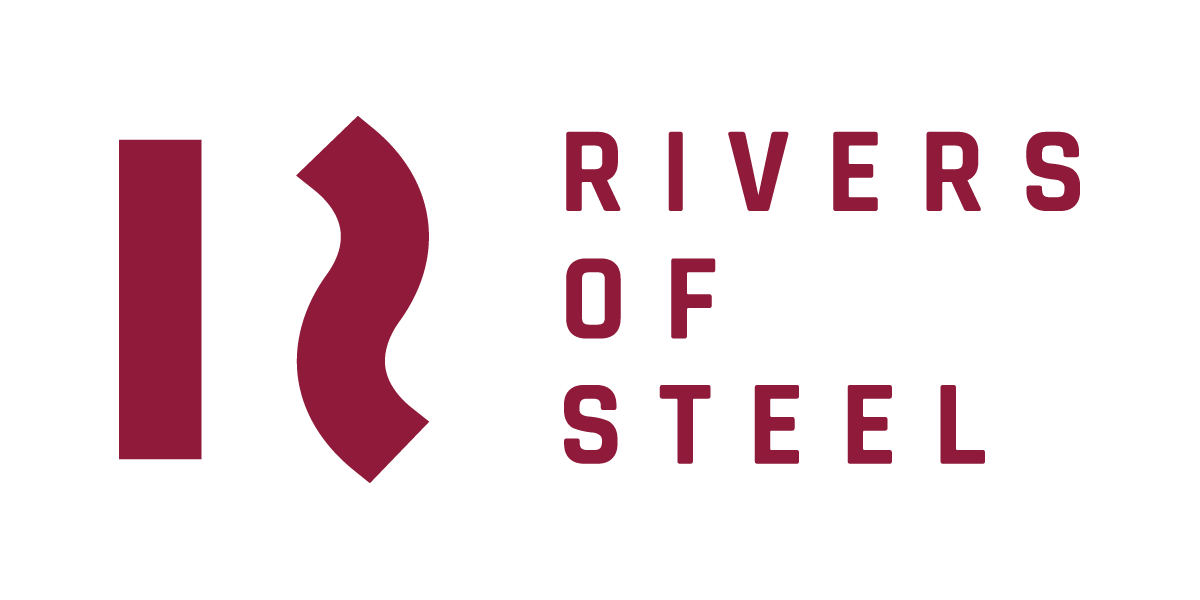
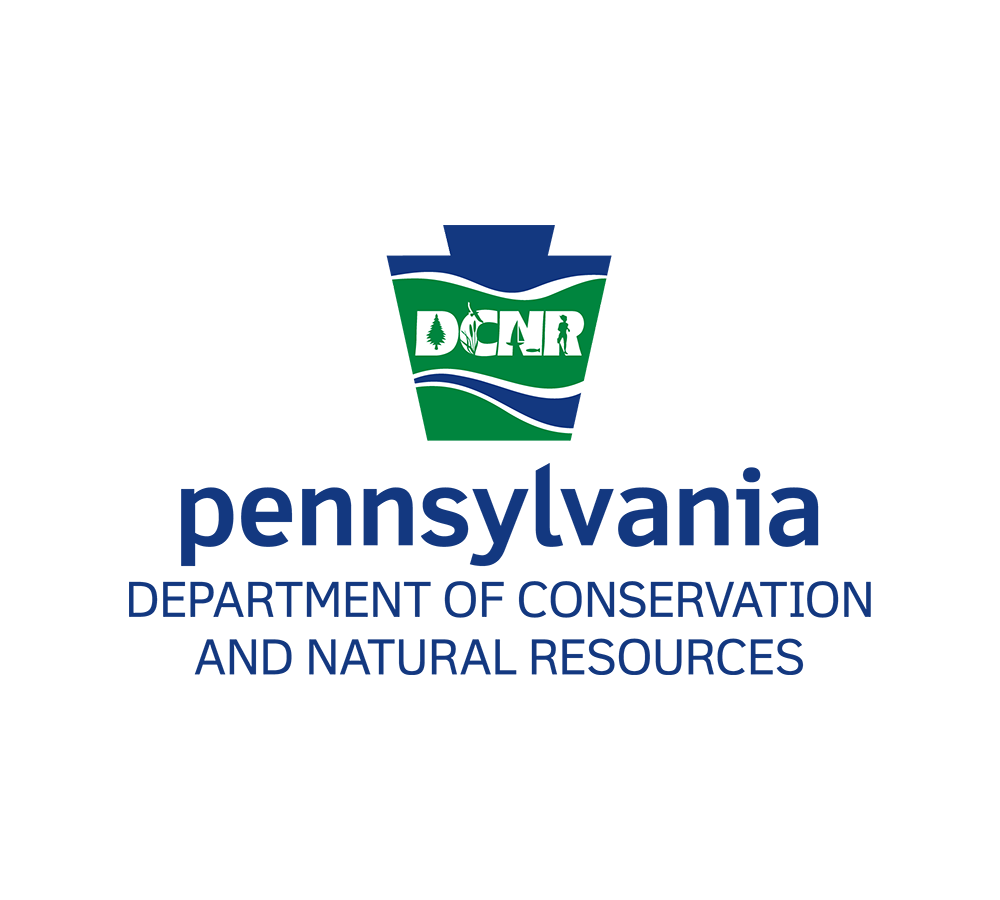
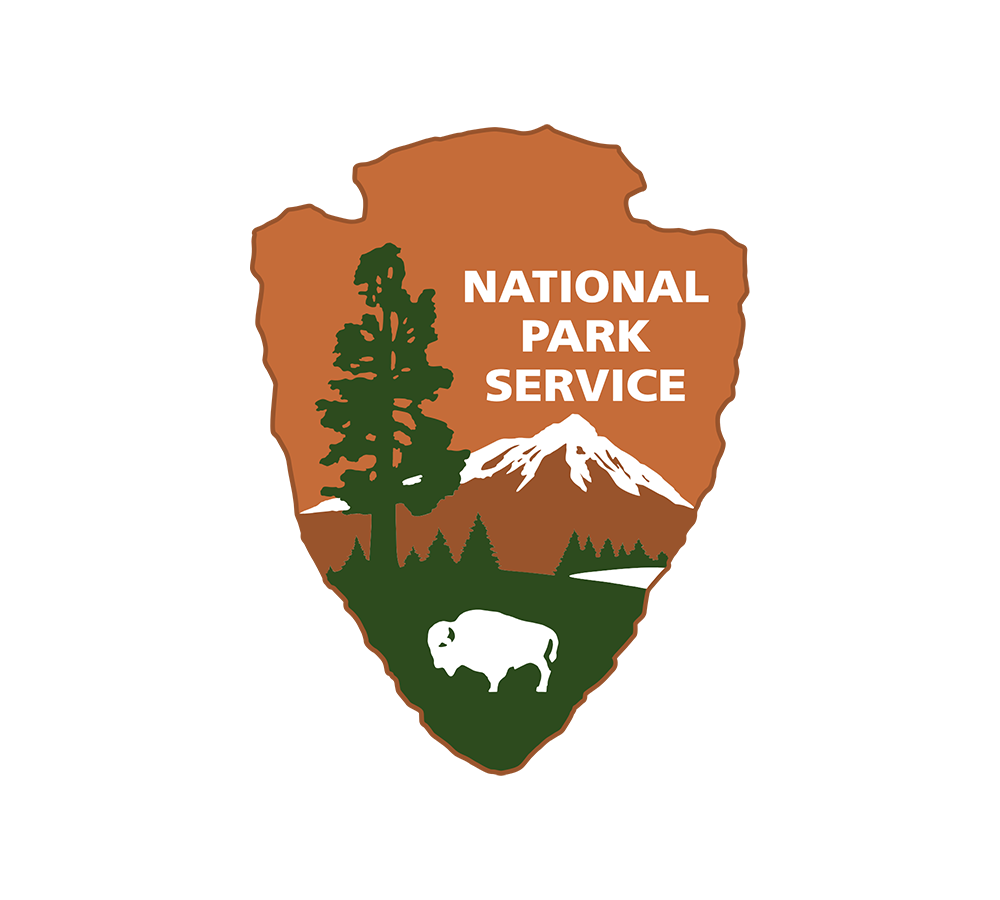
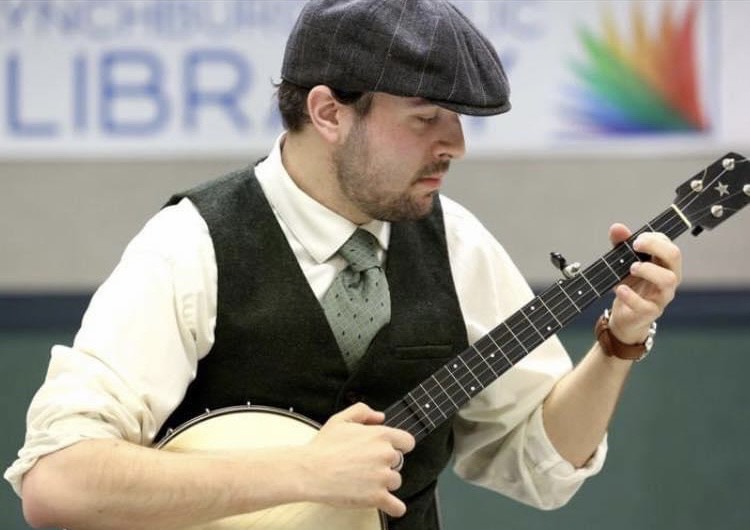
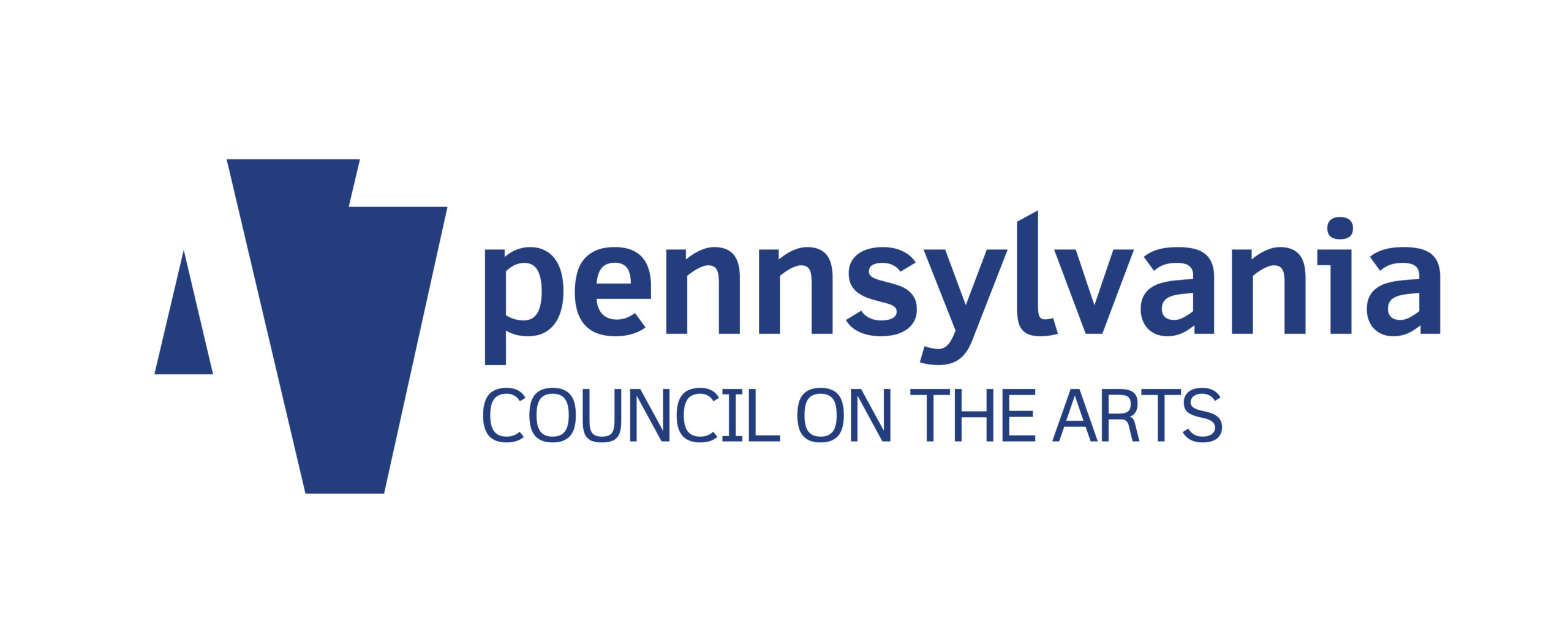
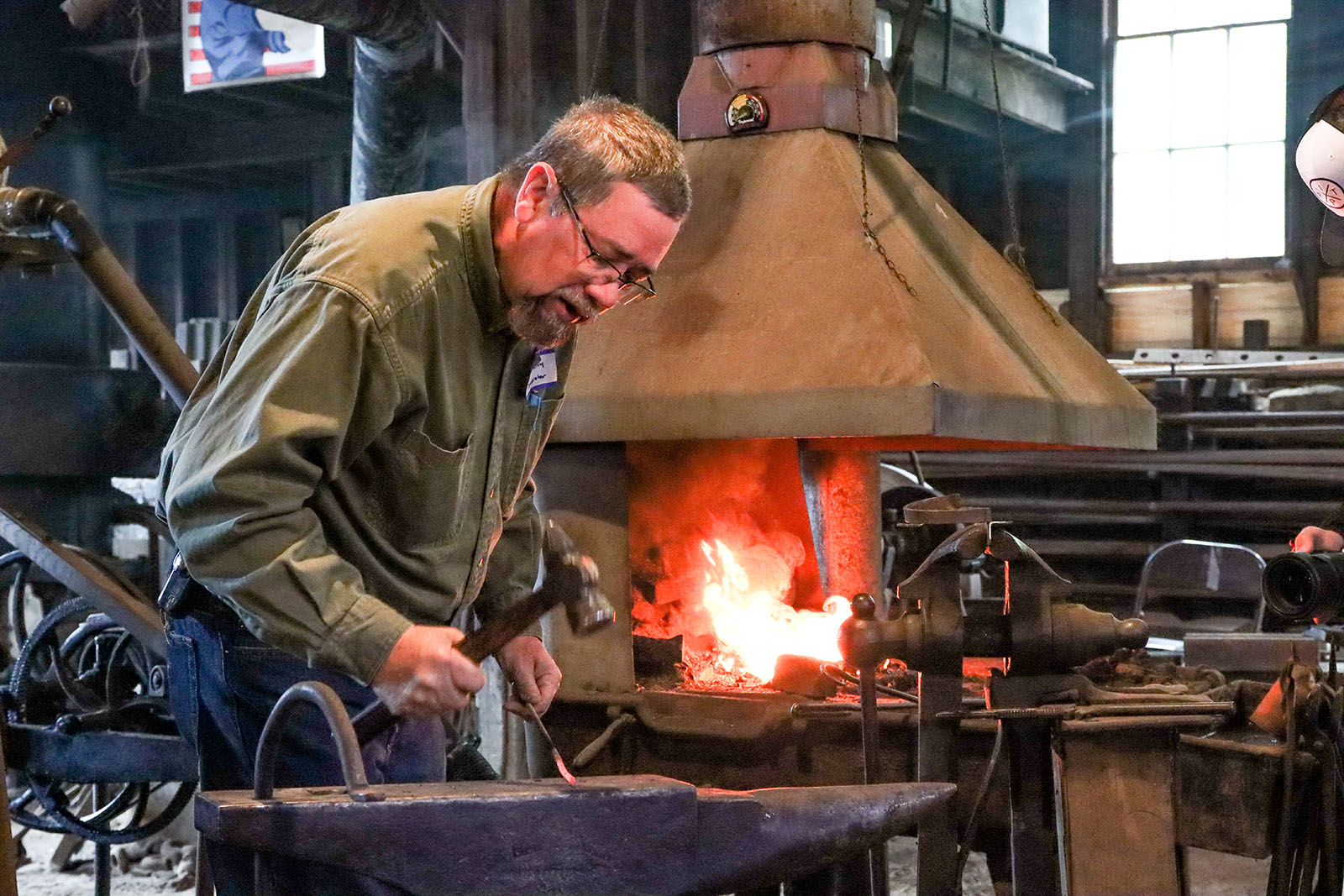
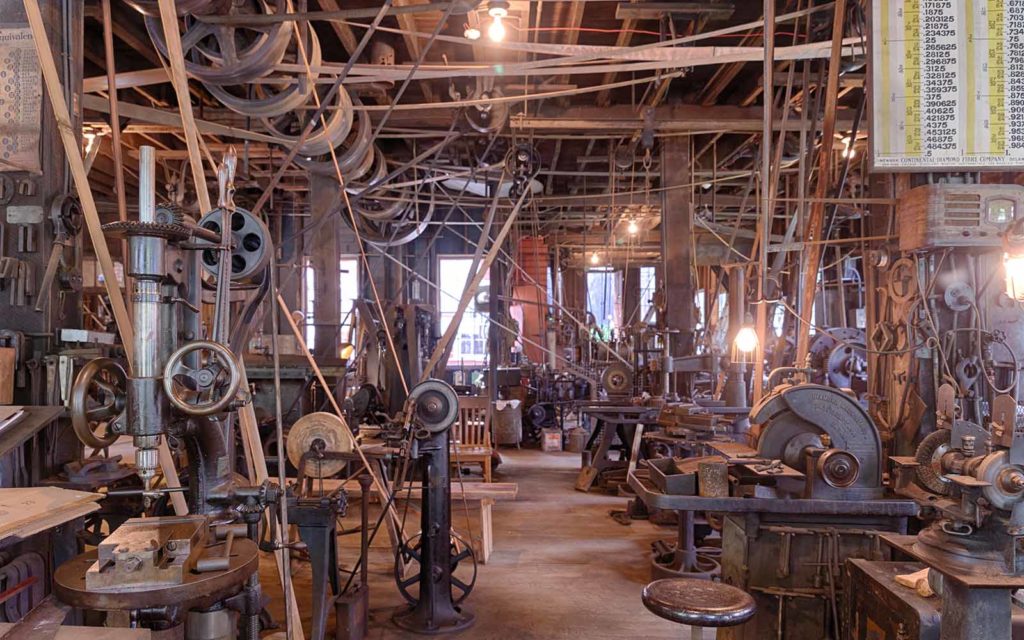
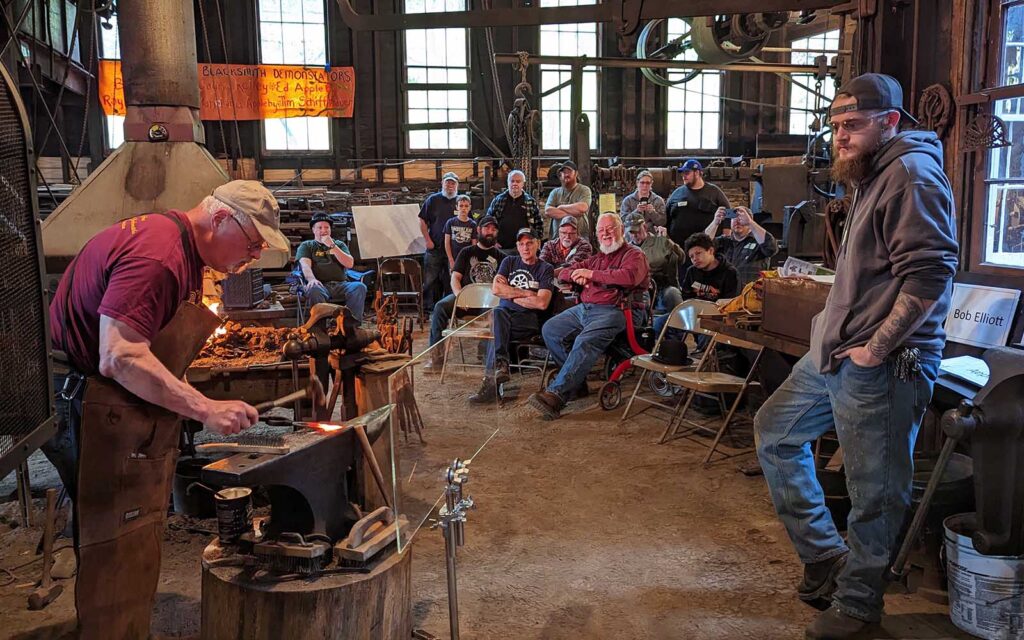
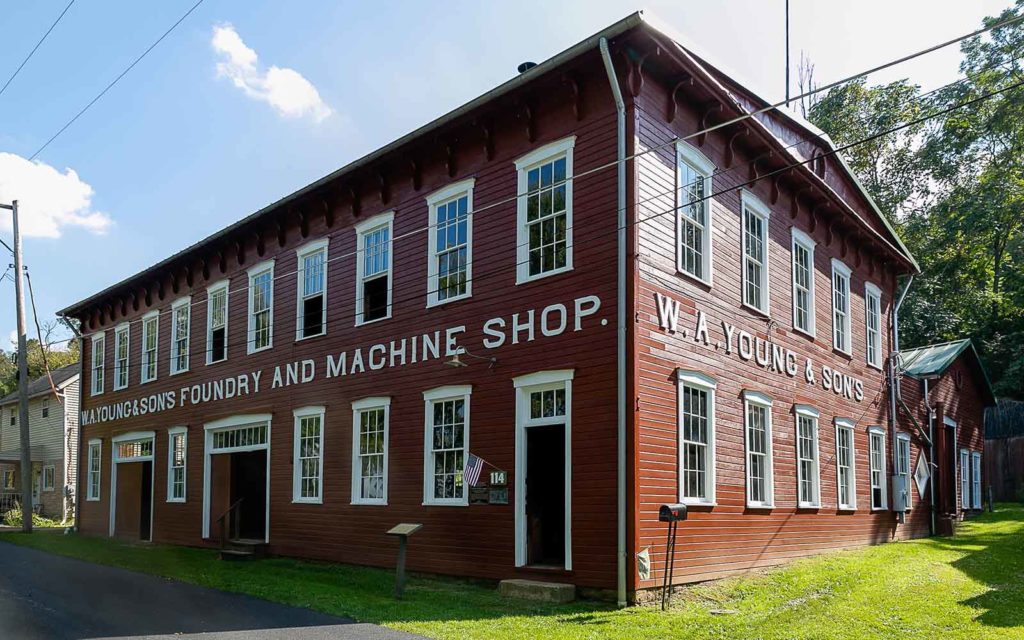
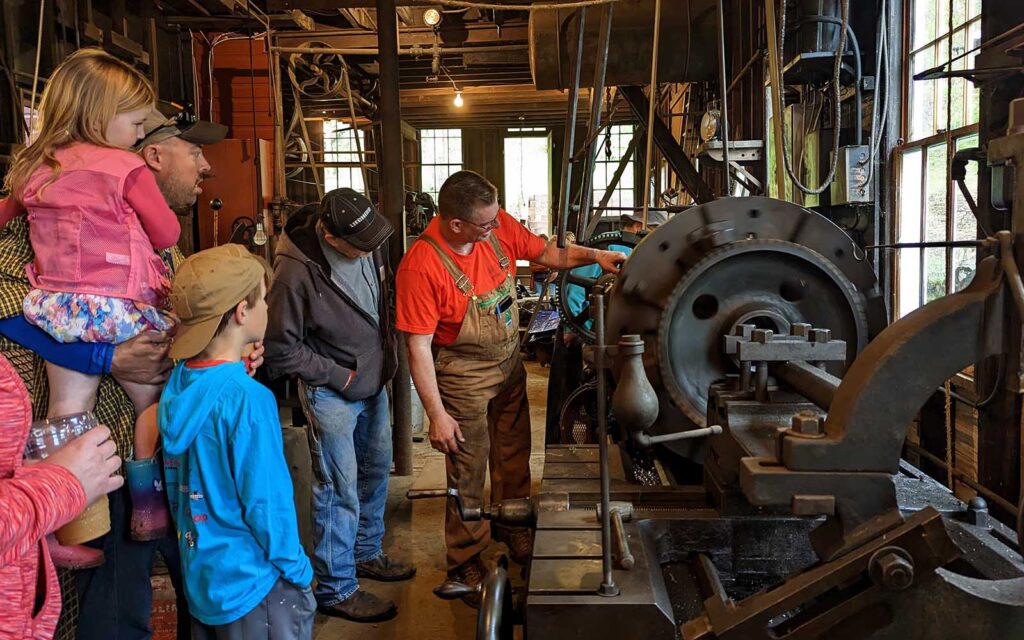
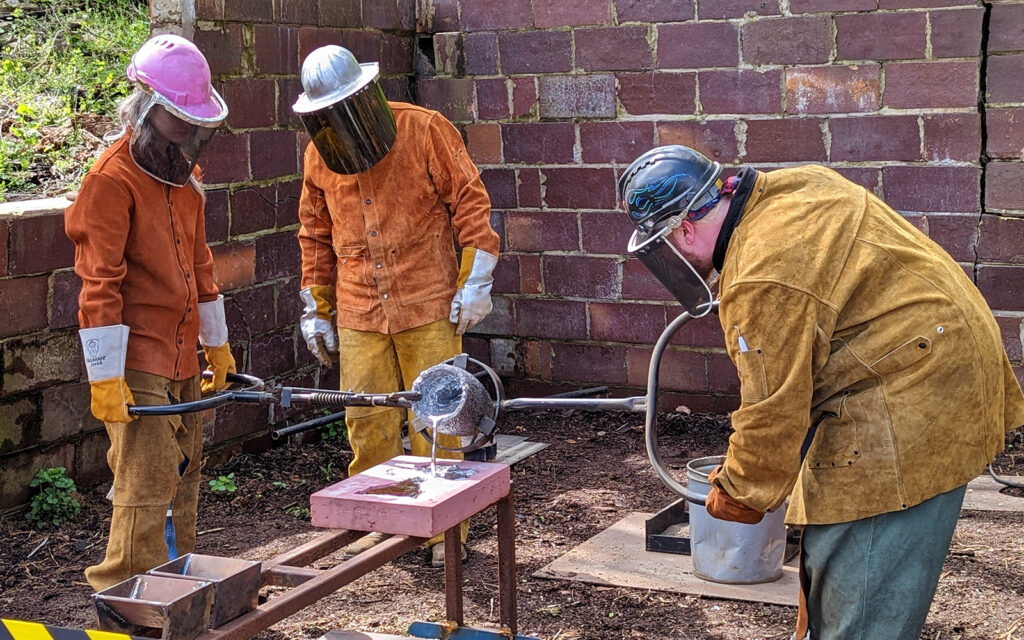

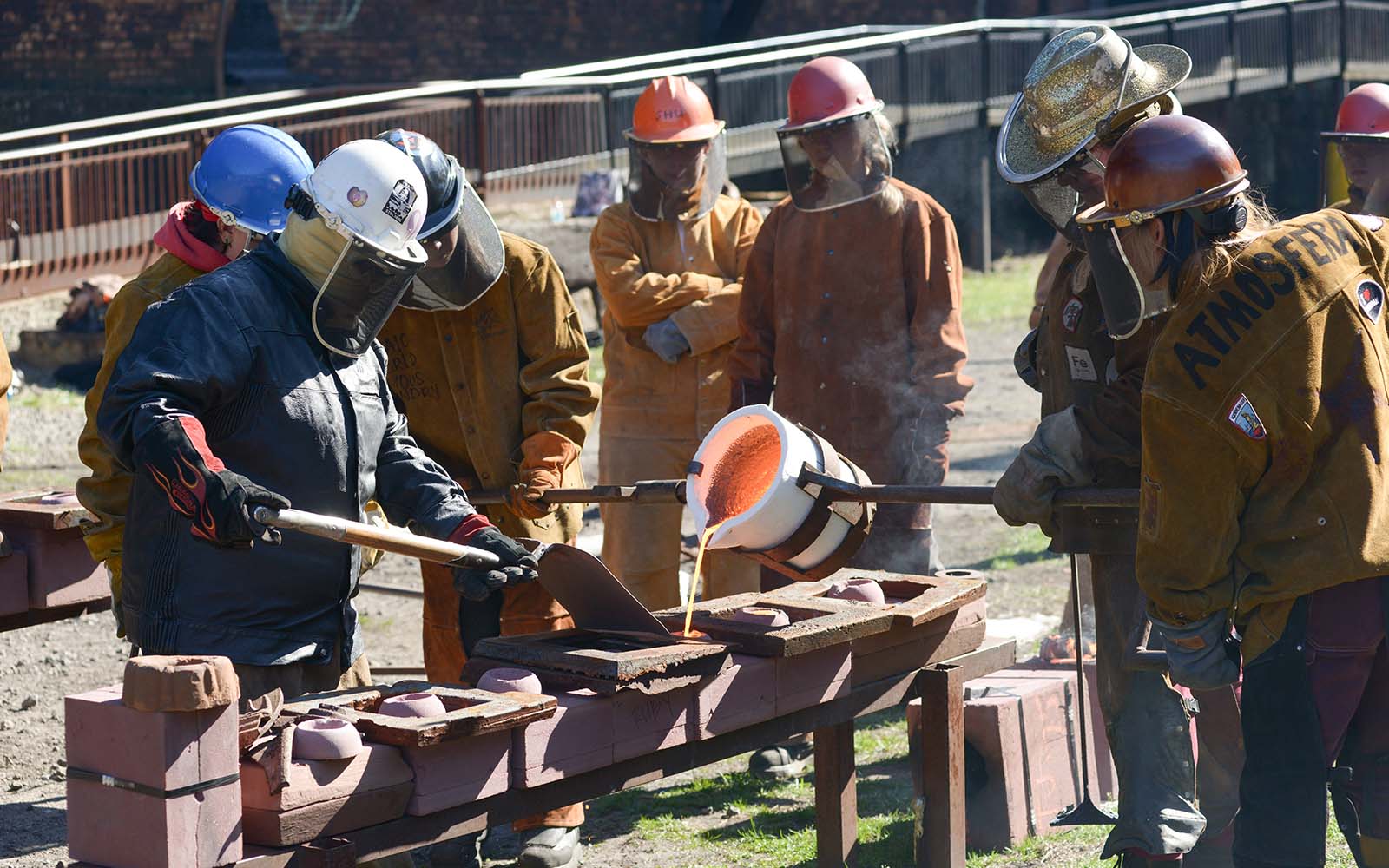
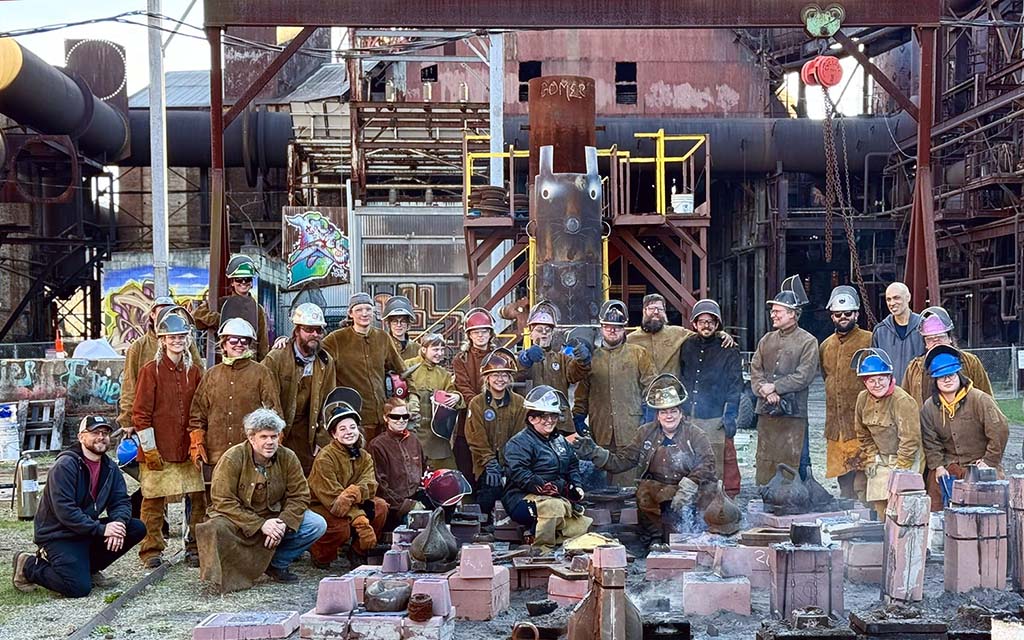

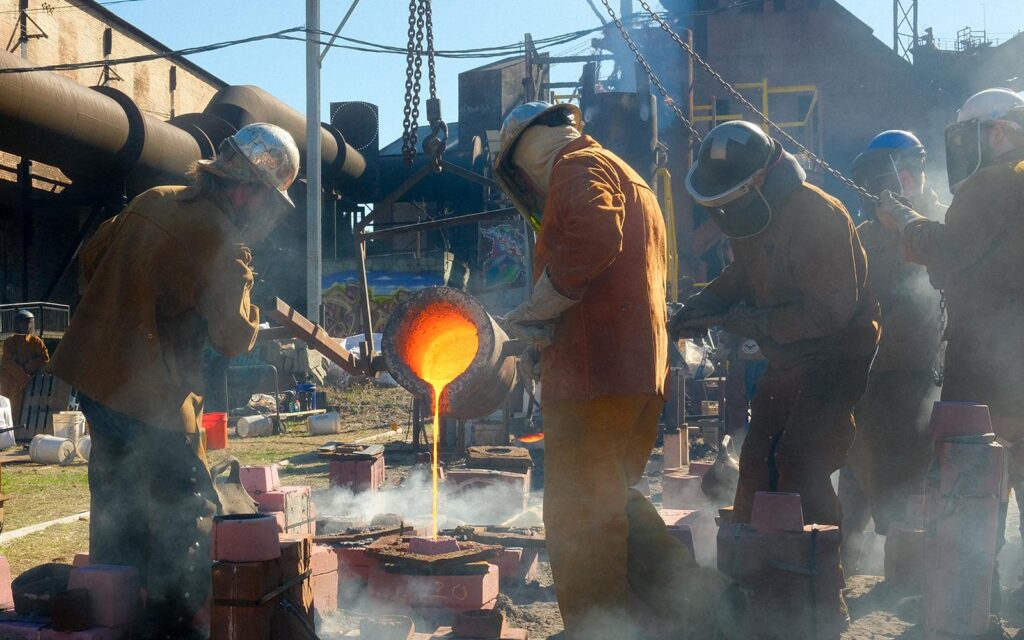
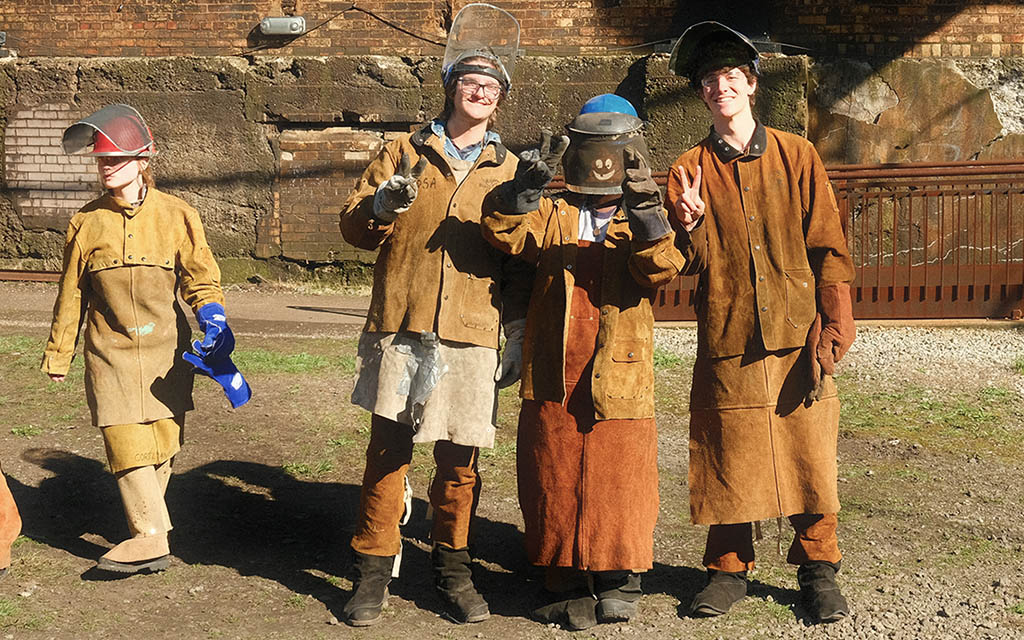
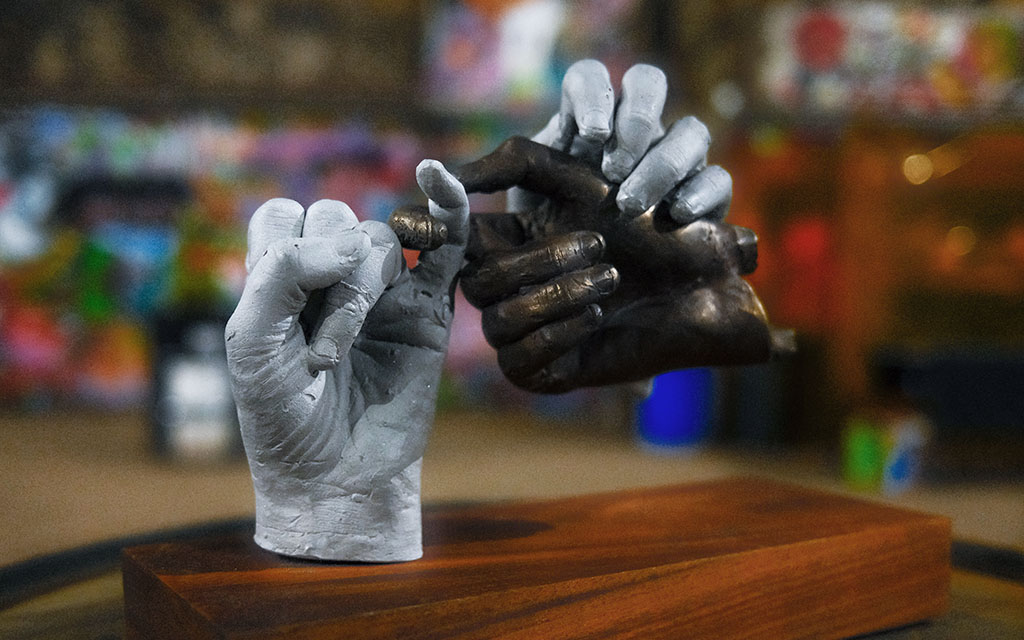
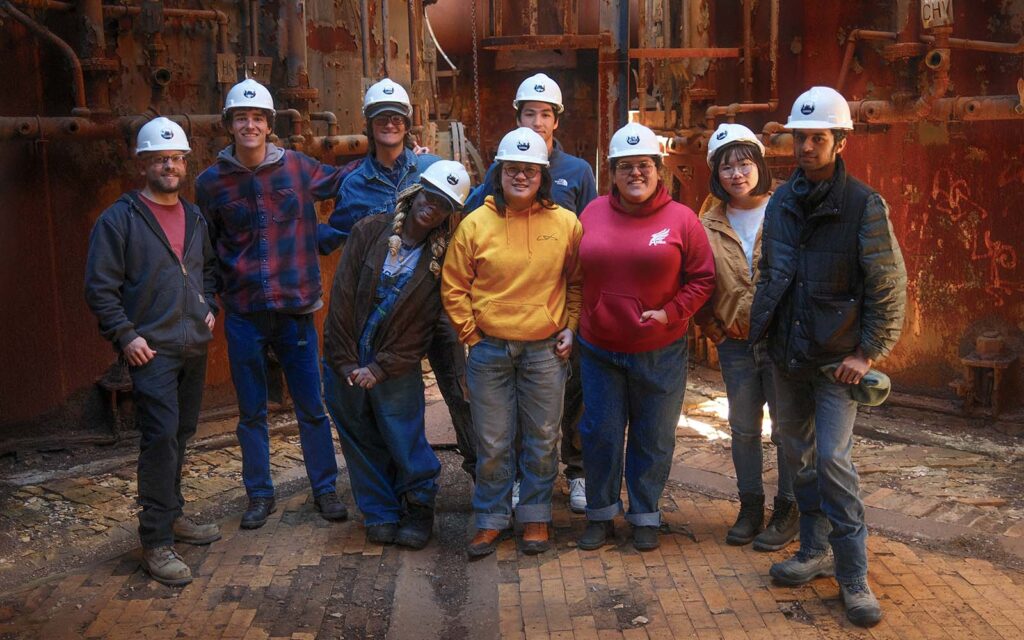

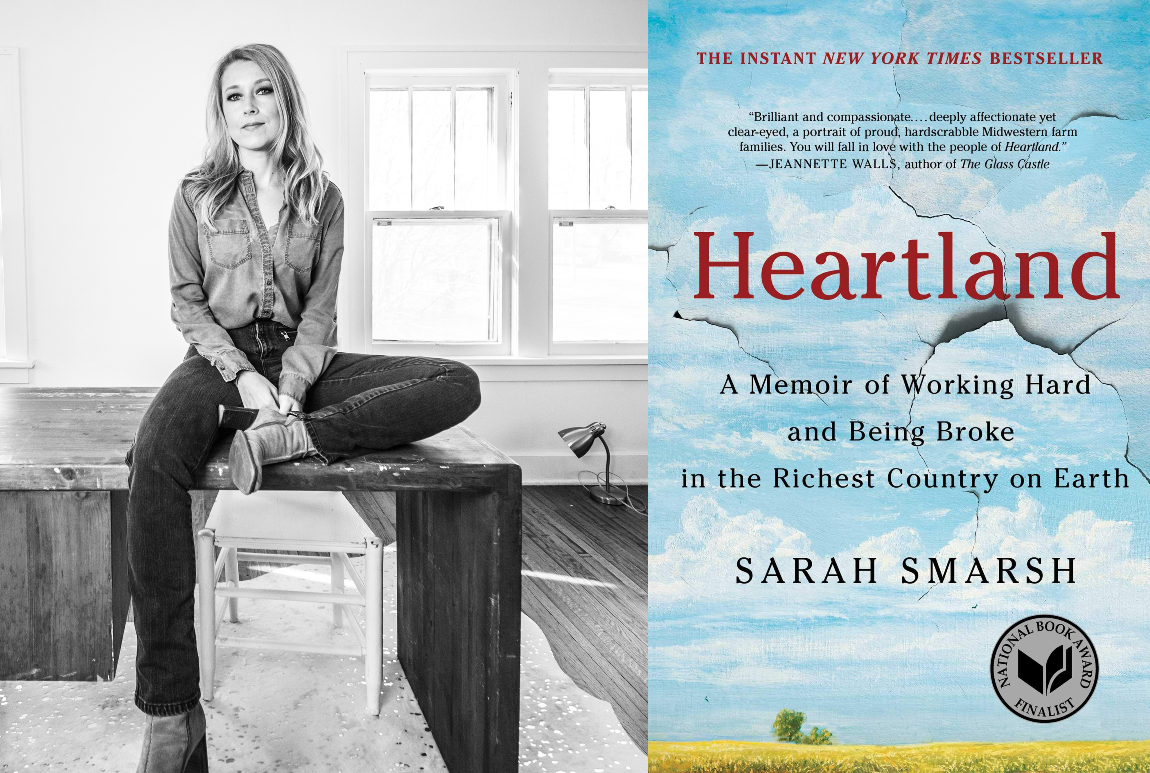
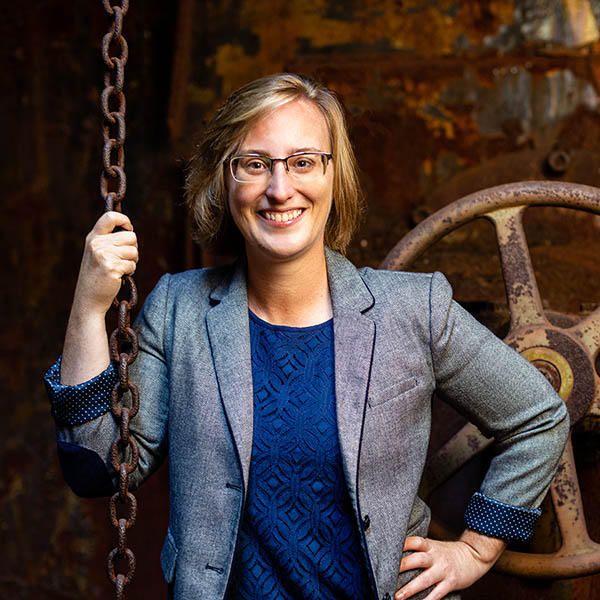 Dr. Kirsten L. Paine is an educator and researcher with more than a decade of experience working in higher education. She started working for Rivers of Steel in 2017 as a tour guide at the Carrie Blast Furnaces National Historic Landmark and was inspired by the mission to preserve such a national treasure held in public trust. Kirsten is committed to the work of public humanities education in her role as Site Management Coordinator and Interpretive Specialist. By creating and facilitating public programs that make the National Heritage Area’s history come alive for the community, she believes in archival study and teaching from primary sources as vital community resources.
Dr. Kirsten L. Paine is an educator and researcher with more than a decade of experience working in higher education. She started working for Rivers of Steel in 2017 as a tour guide at the Carrie Blast Furnaces National Historic Landmark and was inspired by the mission to preserve such a national treasure held in public trust. Kirsten is committed to the work of public humanities education in her role as Site Management Coordinator and Interpretive Specialist. By creating and facilitating public programs that make the National Heritage Area’s history come alive for the community, she believes in archival study and teaching from primary sources as vital community resources.